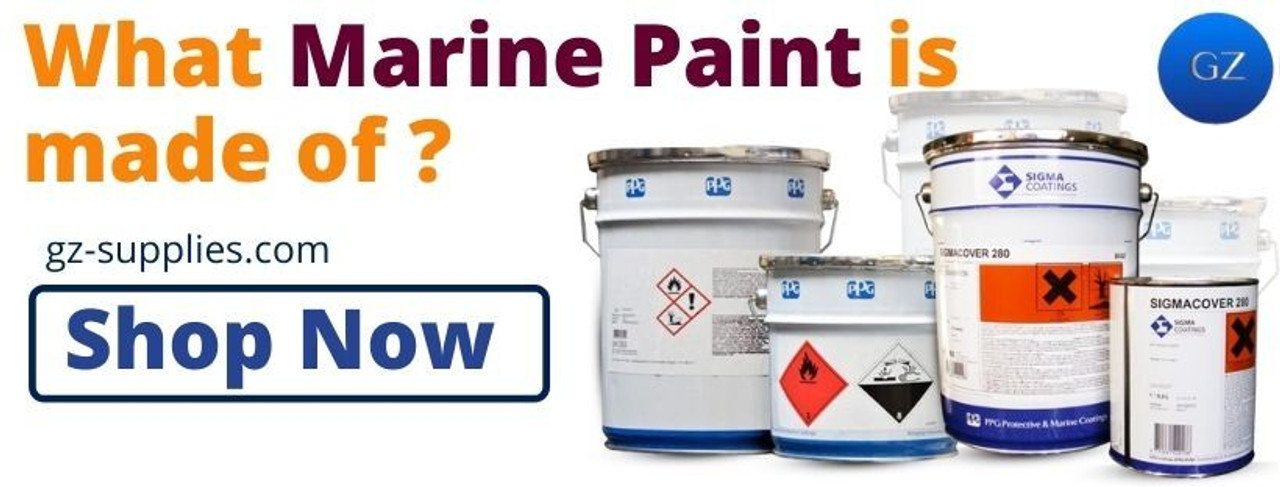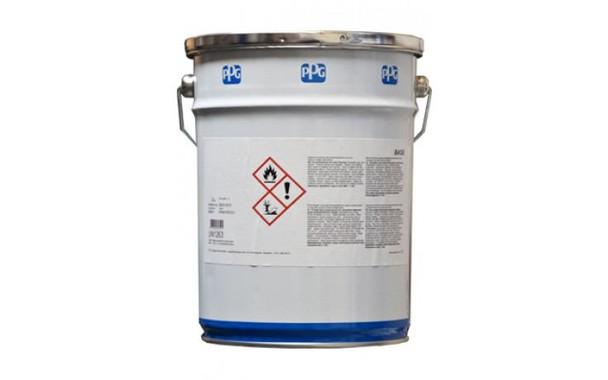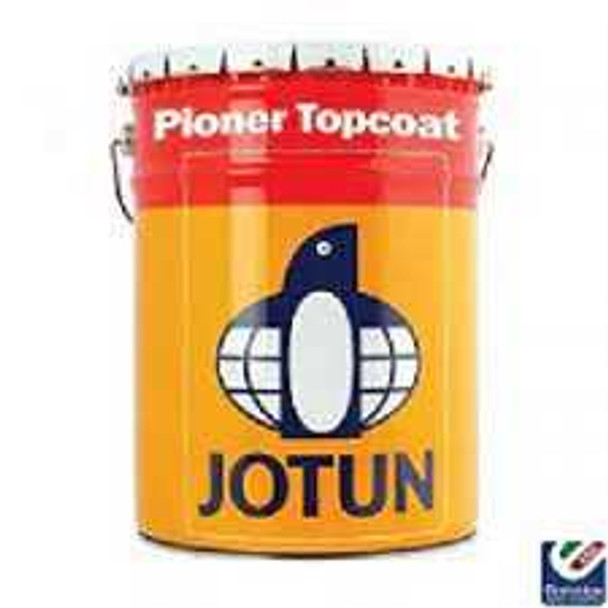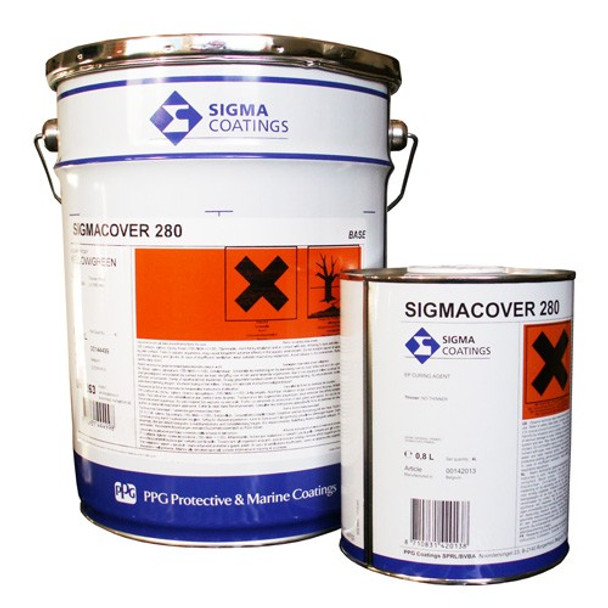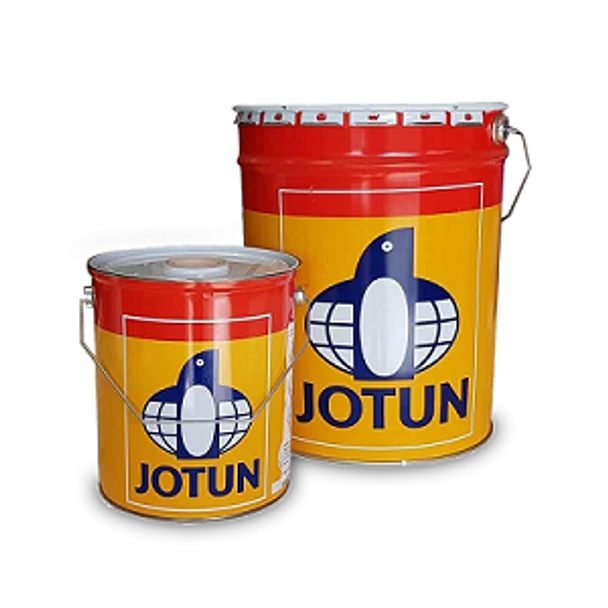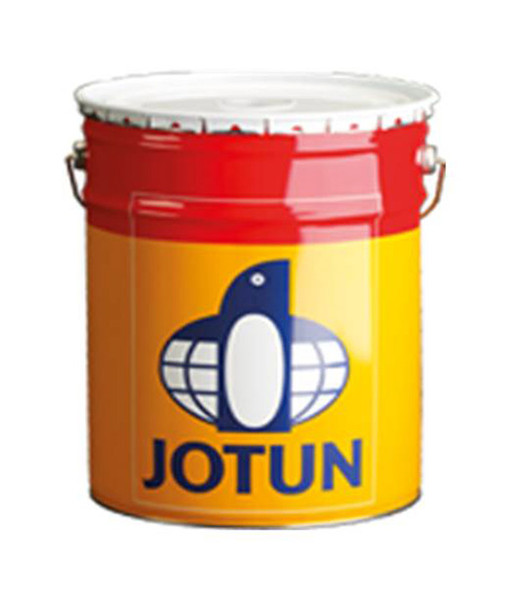What marine Paint is made of
What Marine paint is made of? We must first understand that every chemical composition or compound consists of several elements in their various ratios; the air around us, the water we use, rocks etc. are all constituents of some individual element or molecule in a particular proportion in order to yield a desired end product. In the same manner, the marine paints and coatings we use are also a make-up of other substances. Paints are used to protect metals, timber or plastered surfaces, brickwork and concrete work from the corrosive effects of weather, heat, moisture or gases etc. and to improve their appearance. Composition of the paints can be easily adjusted in the process of their manufacture, depending upon the purpose for which they are required and quality of the work required.
Corrosion and the need for coatings
The majority of metals are found in nature in the mineral state, that is, in their stable oxidized condition as oxides, chlorides, carbonates, sulfates, sulfides, etc. The extraction of a metal from the mineral involves a reduction process which requires a great deal of energy. As a consequence of this large energy input, the metal is in a high energy condition and will try to return to its former stable, oxidized, low energy state as quickly as environmental conditions will allow. It is this energy difference between the pure metal and its oxidized forms which is the driving force for corrosion of the metal. Many corrosion products show a chemical similarity to the corresponding minerals. Iron, for example, is extracted from its ores, mainly oxide and carbonate, by reduction with carbon in a blast furnace. In the presence of moisture and oxygen, the iron metal so obtained is oxidized to rust, which is chemically the same as its ore. The ability of coatings to resist corrosion over extended periods is an important contributor in safeguarding the capital investment in the structure of a vessel. Protective coatings are the first line of defense against the corrosive marine environment. Coatings mainly serve to minimize the rate of corrosion, thereby potentially delaying the utilization of the built-in corrosion margins included in a vessel’s structural scantlings.
Understanding how coatings reduce corrosion rates, how they must be maintained and how coatings eventually break down are important elements of safe vessel operation.
Marine coatings are a type of protective coating used mostly in the marine environment to protect ships, vessels, tankers, and other materials from saline water or fresh water. A marine coating has specific functional properties, therefore it can provide superior protection to the surfaces to which it is applied. This coating protects submerged materials as well as vessels, ships, or yachts from sea water.
Marine coatings protect materials from corrosion and abrasion. The world marine coatings market was forecasted to be US$11.88 billion by 2020.
SIGMARINE 48 SIGMA PROTECTIVE AND MARINE COATINGS
Constituents of paints
Coatings differ in composition depending on what material or surface that is intended to be coated. The four (4) basic Compositions of Paint are: Solvents ( mostly Liquids),Pigments, Additives and Resins (Binder). Besides these essential ingredients, several other substances are added, such as fillers to give bulk to the paint without affecting its properties and to make it economical, solvents or thinners which dissolve other constituents and make the paint thin and driers which help in rapid drying, setting and hardening of the painted surface. Some commonly used fillers for paints are chalk, silica and charcoal, commonly used solvents are turpentine oils, petroleum spirit, commonly used dryers are red lead, litharge and manganese sulphates etc.
Here are some hints to keep in mind while we get back to the constituents of paints:
1. The role of coatings is to protect marine structures against corrosion each part of ships, which are continuously exposed to severe conditions, i.e. seawater immersion, splashes of sea water, Ultra-violet (UV) rays – maintain the value of the assets – ensure vessel safety – protect cargoes, e.g. grain or liquids – – Ballast tanks – Ballast tanks
2. Top Coat- Mid Coat- Primer: are for appearance and protection against UV-light barrier protection effect. Intercoat adhesion corrosion protection and Adhesion epoxy, PU, Alkyd, Acrylate epoxy-coating, Epoxy coating metal substrate.
3. The main functions performed by paints are:
It is used to give a high-class finish.
It is used to give attractive colours.
It is used to give pleasing surfaces design and appearance.
It is also used to protect the material from atmospheric effects.
To protect various substances from corrosion.
To protect wooden articles from wet-rot and many other types of defects.
To make the materials long lasting.
As explained earlier in this review, a paint is a combined formulation of four ingredients namely:-
Solvent
Pigments
Binders (Resins)
Additives
Jotun Marine paints pioneer topcoat
-
Solvent
Solvent is a medium where the binder, pigment and additives are dispersed in molecular form (true solution) or as colloidal dispersion (sols or emulsions).A solvent is usually a liquid but can also be a solid, a gas or a superficial fluid (a substance above its critical point).A solvent may be water or organic liquid. Solvent like thinner is used for viscosity modification of the paint mixture which helps for application with tools such as rollers, brush, spray tins, etc.
There are two (2) important characteristics of solvent which includes:
1. Ability of dissolution of the combined ingredients.
2. The rate of evaporation of the solvent.
Some major examples of solvent used in the coating industry includes:
a.Water – (H2O), it is regarded as a universal solvent.
b.Ketones - is an organic solvents, which is denoted by the presence carbonyl group (C=O) as the functional group.
c.Xylene - is an aromatic solvent with two methyl group appended to a benzene ring structure in its molecule (C6H10(CH3)CH3)
d.White Spirit (Turpentine) - is a mixture of saturated aliphatic and alicyclic hydrocarbons.
e.Alcohols (n-butanol, isopropanol): are organic compounds having hydroxyl groups (-OH) bound to the carbon atoms of an alkyl group.
There are other solvents too but the ones mentioned have consistently been used in the coating industry space.
2. Binders (Resin)
Binders are polymers (resins) forming a continuous film responsible for firm adhesion on the substrate surface. They are the major ingredient of coatings. The binder holds the pigment particles distributed throughout the coating. The binder is dispersed in a carrier (water or organic solvent either in molecular form (true solutions) or as colloidal dispersions(emulsions or sols).
Sigmacover 280 Sigma Marine paint
Some major examples of Binders (Resins) used in the coating industry includes:
- Epoxy Resin – epoxy resin is obtained as a product of a resin containing short molecules in the presence of a hardener. They are known for their good mechanical properties, electrical insulating properties, adhesion, and chemical- and heat-resistance. The most common types of epoxy resins include bisphenol A, bisphenol F and phenolic novolac.The hardeners or co-reactors, used with epoxy resins include polyamide, amidoamine, phenalkamine, aliphatic amine adducts, cycloaliphatic amine, aromatic amine and aliphatic amine. The best resin and co-reactant combination depends on the purpose of the application and the performance requirements sought.
- Chlorinated Rubber – chlorinated rubber is achieved via polymerization of the degraded natural rubber in the presence of atoms of chlorine participating in cross-linking.
- Alkyd Resin – it is formed via the condensation polymerization in the reaction of fatty acid and glycerol with polybasic acids.
- Acrylic resins - are prepared by polymerization of acrylic or methacrylic esters.
- Latex (PVA) - is avinyl polymer prepared by free radical vinyl polymerization of the monomer vinyl acetate
- Polyurethanes- polyurethanes are prepared by the step-growth polymerization of isocyanates reacting with monomer molecules containing hydroxyl (alcohol) groups.
Other binders used in coatings includes:
Silicate Coatings
Asphalt, Bitumen, and Pitch Coatings
Urea, Benzoguanamine, and Melamine Resins for Coatings
Silicone Coatings
Saturated Polyester Coating
Unsaturated Polyester Coating, etc.
Jotun marine paint hardtop clear AS
3. Pigments
A pigment is a colored material that is completely or nearly insoluble in water. It is a solid substance dispersed throughout the coating to impart a color opacity (hide the substrate surface) and protect the substrate from Ultraviolet light.
a. Zinc Oxide (ZnO)- is a white synthetic inorganic pigment with a refractive index 2.01.
b.Zinc Yellow (Yellow 36 )- is Zinc Chromate (ZnCrO4).
c.Chrome Oxide Green - is olive-green inorganic pigment with a high level of opacity. chrome oxide green is the most stable green pigment.
D.Phthalocyanine Green - imparts green-blue color. It is used as the pigment for decorative applications. The pigment is resistant to heat, solvents and alkalis.
e. Benzidine Yellows - are yellow-to-red organic pigments for interior applications. They are resistant in chemicals and stable at elevated temperatures (up to 300°F / 150°C).
f. Yellow Dyes - are stable yellow non-toxic organic pigments with good opacity.
g. Ultramarine Blue - is a natural pigment made of the semi precious mineral lapis lazuli. The pigment is resistant to fading. It is stable at elevated temperatures.
Other pigment in coating:
Pigment Brown 6
Red 170
Dioxazine Violet
Vermilion
Iron (II) Oxide (FeO)
etc.
Fillers are mixed sometimes with these pigments to increase abrasion resistance of the paint, Talc also protects the substrate from the penetrating water, as a gloss reducing additive depending on the coating and the operation involved. Examples includes:
Quartz sand (SiO2), Baryte (BaSO4), Limestone (calcium carbonate, CaCO3), etc.
Jotun marine paint pilot 11
4. Additives
Additives are small amounts of substances modifying the paint properties and to improve the performance and durability. These additives have different purposes.
Examples of Additives
Emulsifiers are wetting agents increasing the colloidal stability of the paints in liquid state.
Texturizers - impart textures to the coatings.
Defoamers - prevent formation of air bubbles entrapped in the coatings
Corrosion inhibitors - reduce the corrosion rate of the substrate.
Adhesion promoters - improve the adhesion of the coating to the substrate.
Driers - accelerate the paints drying (hardening) by catalyzing the oxidation of the binder.
Plasticisers - increase the paints flexibility.
Flow control agents - improve flow properties.
UV stabilizers - provide stability of the paints under ultraviolet light.
Frequently Asked Questions
1. Can I use the same paint on the hull and topside areas?
The hull and topside areas have different requirements, so it's recommended to use specific paints designed for each area. Hull paint is typically formulated for underwater use and has antifouling properties, while topside paint is more suitable for above-the-waterline areas.
2. Can I apply antifouling paint over old antifouling paint?
In most cases, yes, antifouling paint can be applied over old antifouling paint. However, proper surface preparation is essential to ensure good adhesion. It's recommended to consult the paint manufacturer's instructions for specific guidance.
3. Can I paint my boat in any weather conditions?
Weather conditions can significantly affect the paint application and drying process. It's generally recommended to paint in dry, well-ventilated conditions with moderate temperatures. Avoid painting in direct sunlight, high humidity, or during windy or rainy conditions.
Related Articles
IS ALL MARINE PAINT OIL BASED?
For more information contact Us.

